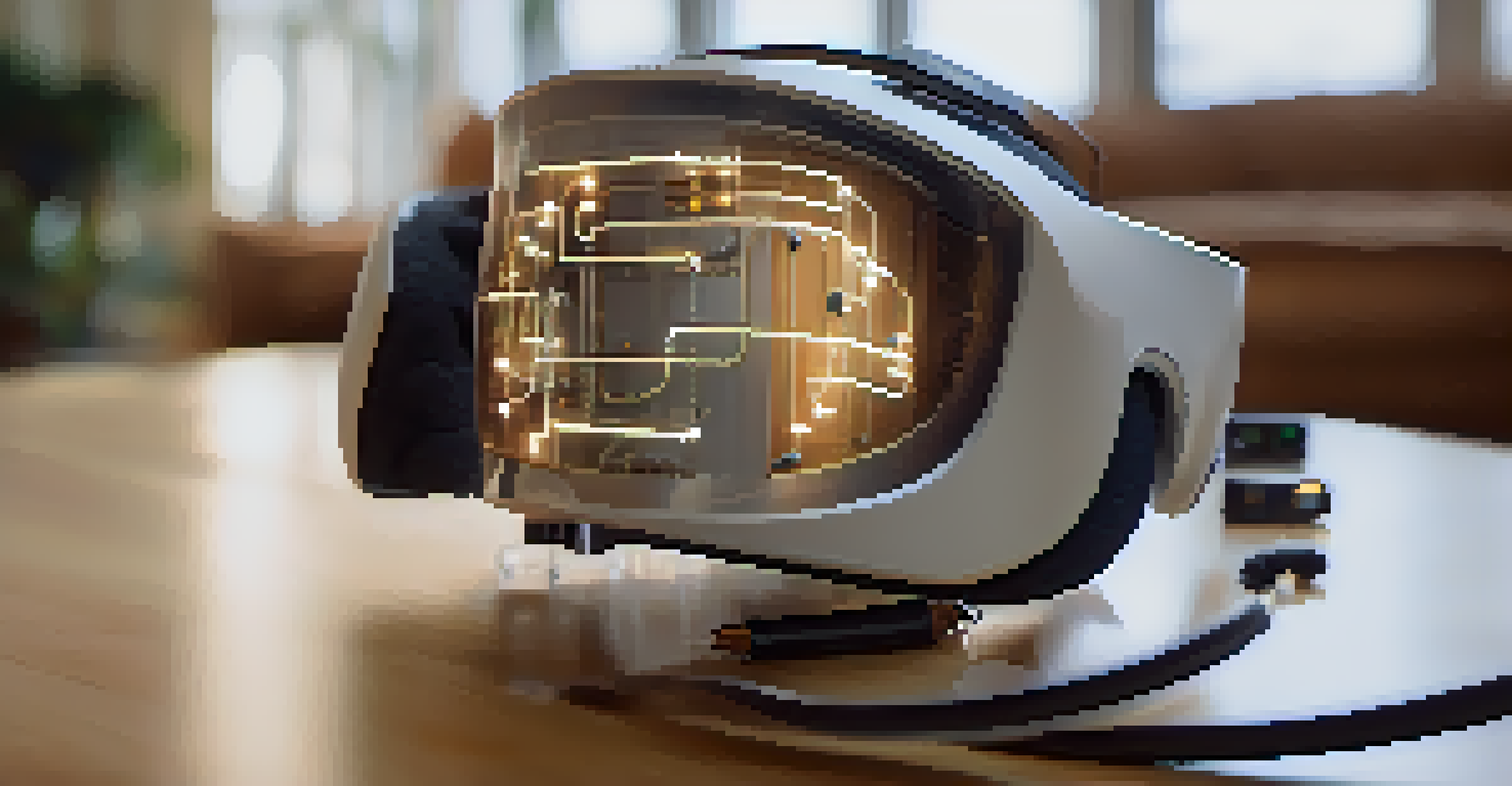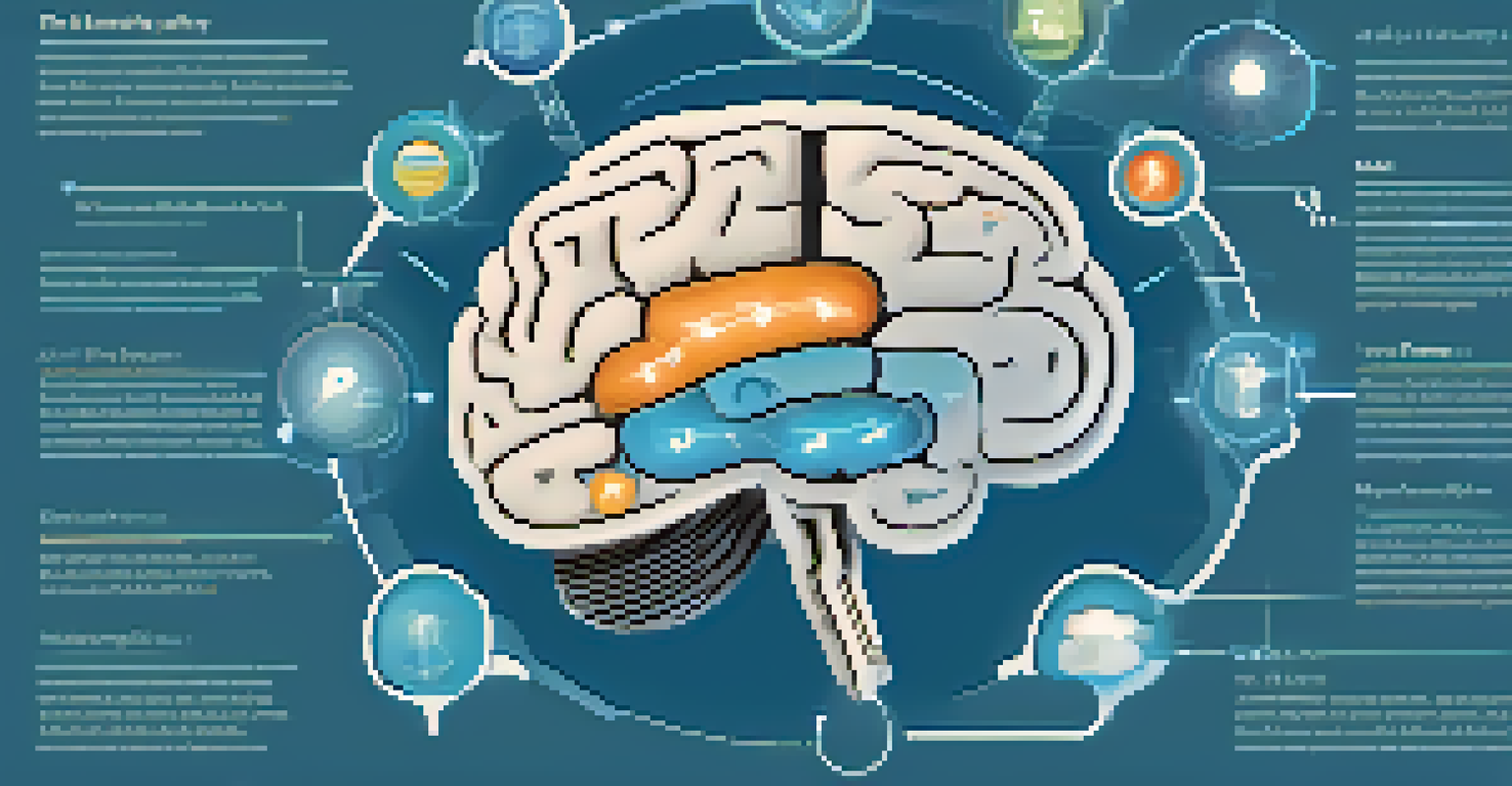Wearable Tech: Monitoring Brain Activity During Hallucinations

Understanding Hallucinations: What They Are and Why They Matter
Hallucinations are sensory experiences that appear real but are created by the mind. They can affect any of the senses, but most commonly involve hearing voices or seeing things that aren't there. Understanding these experiences is crucial, especially for individuals living with mental health disorders like schizophrenia.
The mind is everything. What you think you become.
By studying hallucinations, researchers can gain insights into the brain's functioning and the underlying causes of these phenomena. This knowledge can lead to better treatments and support for those affected. Moreover, it opens up discussions about the boundaries of perception and reality.
With advancements in technology, we can explore these complex experiences in new ways. Wearable tech is at the forefront, providing researchers with tools to monitor brain activity in real-time during hallucinations, offering a glimpse into the intricate workings of the mind.
The Intersection of Wearable Technology and Neuroscience
Wearable technology has revolutionized the way we monitor health and wellness, extending its reach into neuroscience. Devices like EEG headsets allow for non-invasive monitoring of brain activity, providing valuable data without the need for cumbersome lab equipment. This accessibility means researchers can study brain functions in more natural settings.

These devices can track electrical activity in the brain, helping scientists identify patterns associated with hallucinations. For example, specific frequency bands might indicate when a person is experiencing a hallucination, allowing for a better understanding of how the brain processes these experiences.
Hallucinations Explained
Hallucinations are sensory experiences generated by the mind, crucial for understanding mental health disorders.
By bridging the gap between technology and neuroscience, we can enhance our understanding of mental health conditions. This fusion not only aids researchers but also empowers individuals to gain insights into their own experiences, fostering a sense of control and understanding.
How Wearable Tech Works: The Basics of Brain Monitoring
Wearable tech used for monitoring brain activity typically relies on electroencephalography (EEG), which detects electrical signals produced by brain cells. These signals can be captured through sensors placed on the scalp, allowing for real-time monitoring of brain activity. This non-invasive method is user-friendly, making it suitable for various settings.
Technology is best when it brings people together.
When a person experiences a hallucination, their brain exhibits distinct patterns of electrical activity. Wearable devices can capture these patterns, providing researchers with data to analyze. For instance, increased theta wave activity may correlate with the onset of hallucinations, revealing crucial information about the brain's functioning.
Understanding how these devices work demystifies the technology and underscores its potential. As research continues, the goal is to refine these tools, making them even more effective for monitoring brain activity in various contexts, including mental health treatment.
Real-World Applications: Monitoring Hallucinations in Practice
The practical applications of wearable tech in monitoring hallucinations are promising. For instance, mental health professionals can use data from these devices to tailor treatment plans for individuals experiencing hallucinations. By understanding when and how these episodes occur, they can implement strategies to help manage symptoms effectively.
Additionally, researchers can collect data from a diverse range of individuals, leading to more comprehensive insights into hallucinations across different populations. This could help identify common triggers or patterns, ultimately improving the quality of life for many individuals experiencing these phenomena.
Wearable Tech in Neuroscience
Wearable technology, such as EEG headsets, allows for non-invasive monitoring of brain activity, enhancing research on hallucinations.
Real-world applications not only benefit the research community but also empower patients. By involving individuals in their own monitoring, they can better understand their experiences, fostering a sense of agency in managing their mental health.
Challenges and Limitations of Wearable Tech in Neuroscience
Despite the potential of wearable tech, there are challenges and limitations to consider. One major hurdle is the accuracy of the data collected. While EEG devices can provide valuable insights, they may not capture the full complexity of brain activity, leading to potential misinterpretations of the results.
Another challenge is the variability among individuals. Each person's brain reacts differently to stimuli, making it difficult to establish universal patterns. Researchers must account for these differences when analyzing data, which can complicate the research process.
Moreover, the stigma surrounding mental health can hinder participation in studies involving wearable tech. Individuals may be reluctant to engage with monitoring devices, fearing judgment or misunderstanding. Overcoming these barriers is essential for advancing research and ensuring that wearable technology can be effectively used in this field.
The Future of Wearable Tech in Monitoring Mental Health
As technology continues to evolve, the future of wearable tech in monitoring mental health looks promising. Innovations in AI and machine learning could enhance the analytical capabilities of these devices, providing deeper insights into brain activity during hallucinations. This could lead to more personalized treatment approaches tailored to individual needs.
Additionally, the integration of wearable tech with telehealth services is on the rise. Patients could receive real-time feedback and support from healthcare providers, making mental health care more accessible and responsive. This convergence of technology and care holds great potential for improving mental health outcomes.
Future of Mental Health Monitoring
The integration of AI and telehealth with wearable tech promises to improve mental health outcomes through personalized care.
Ultimately, the goal is to create a holistic approach to mental health monitoring. By combining technology with compassionate care, we can foster an environment where individuals feel supported and empowered in their mental health journeys.
Conclusion: Embracing the Potential of Wearable Tech
In conclusion, wearable technology offers a groundbreaking approach to monitoring brain activity during hallucinations. By harnessing this technology, researchers and clinicians can gain valuable insights into complex mental health experiences, paving the way for improved treatments and understanding.
As we continue to explore the intersection of technology and mental health, it's crucial to remain mindful of the ethical implications involved. Ensuring that individuals feel safe and respected during research is paramount, as is maintaining transparency about how their data will be used.

By embracing the potential of wearable tech, we can foster a future where individuals experiencing hallucinations receive the support and understanding they deserve, ultimately leading to better mental health outcomes for all.